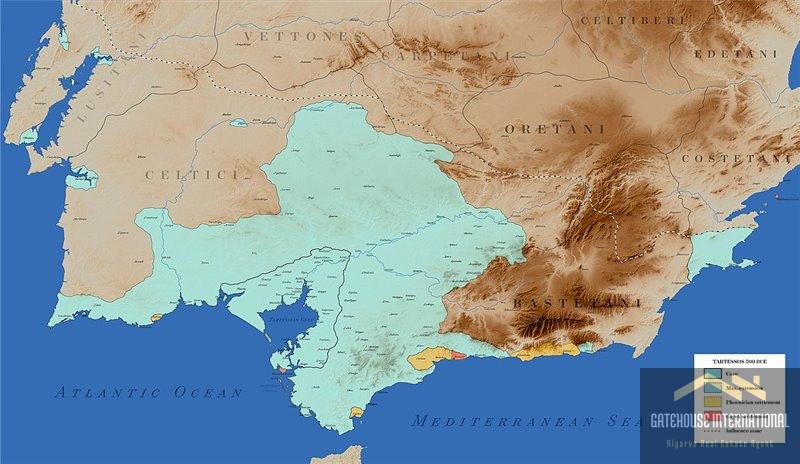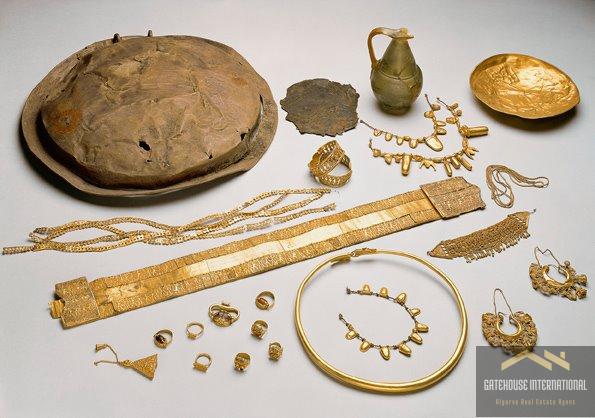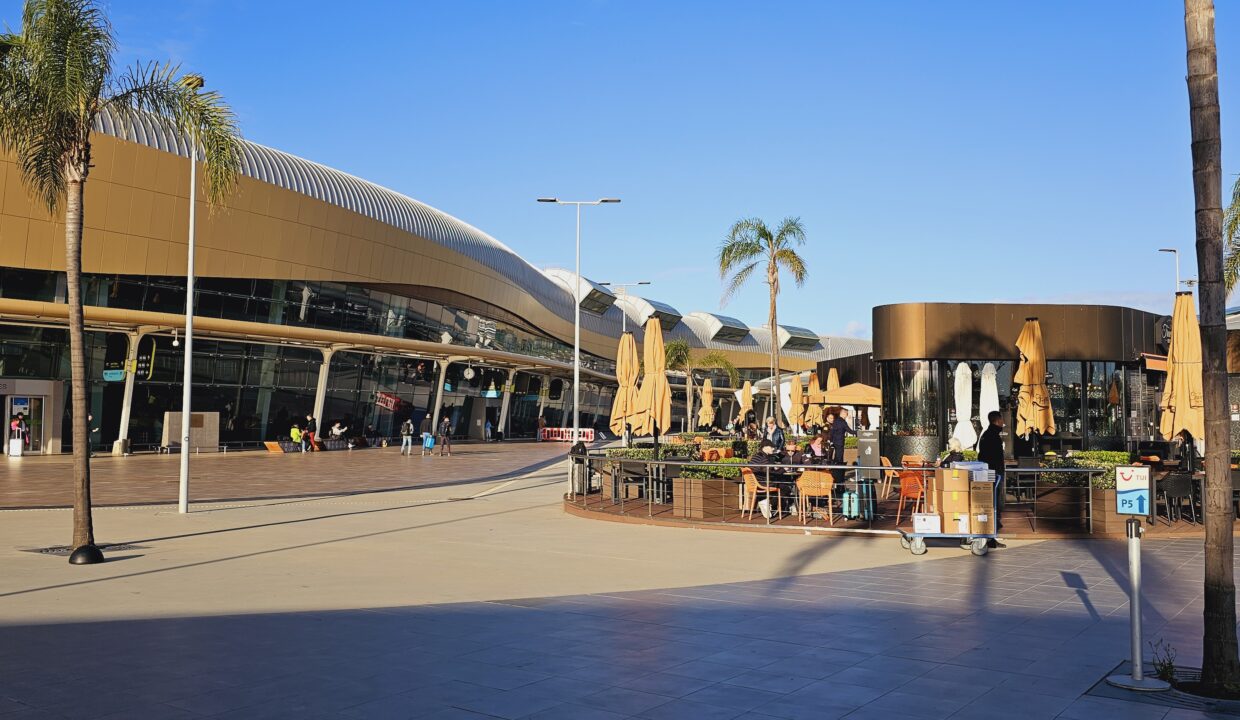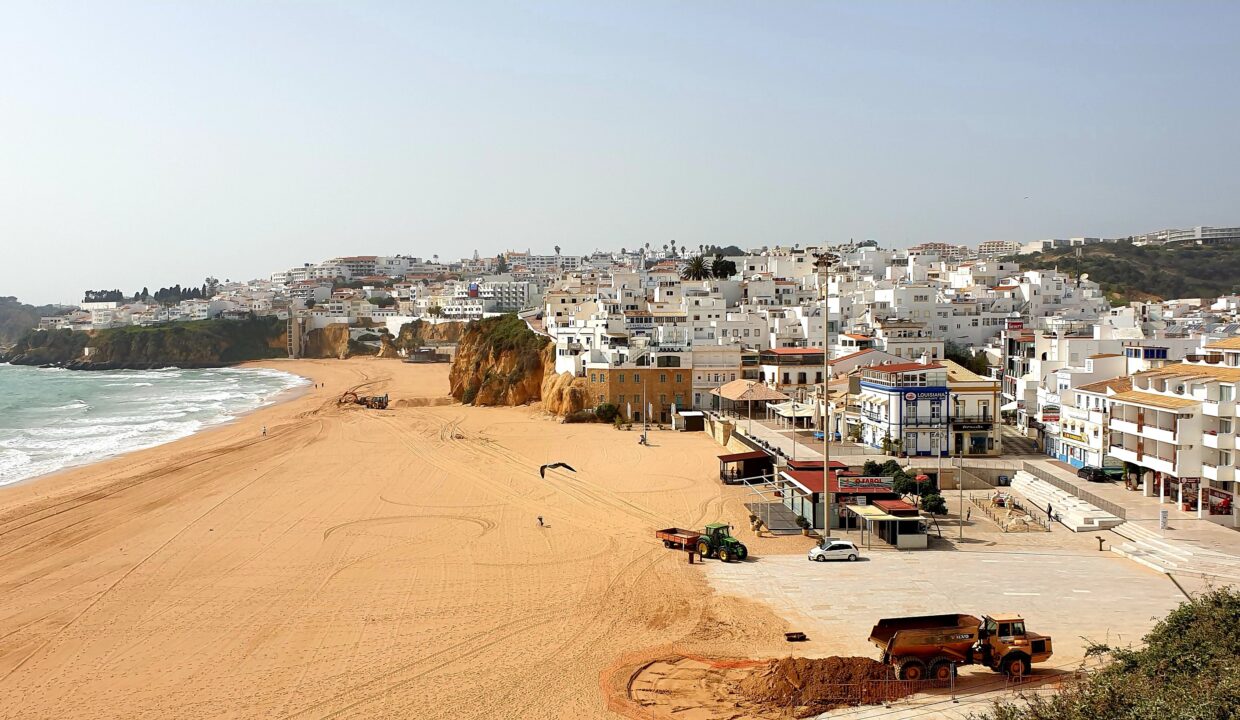Is The Lost City of Atlantis in The Algarve?
The Algarve and The Lost City of Atlantis
A tongue-in-cheek take on the Algarve’s lost city of Atlantis. A look back to the history of some of the first settlers in the Algarve region of Portugal.
Mystery and myth surround the ancient society of Tartessos who are thought to be the first settlers in the Algarve and have even been linked to the Lost City of Atlantis.
At the Beginning 9th Century BC
During the 9th to 7th, the southern coast of Portugal and Spain was once the homeland of a lost civilization known as Tartessos.
It lay beyond the Pillars of Hercules, the strait of Gibraltar, and was widely renowned for its incredible wealth and the influence it brought to the region.

Plato’s Story of Utopia Atlantis
However it also mysteriously vanished sometime in the middle of the first millennium BC, leaving some believing it may have been the inspiration for Plato’s Atlantis or a descendent civilization of it.
Plato first told his story of Atlantis around 360 B.C. The rulers of Atlantis, he said, were half god and half human. They had created a utopian civilization and became a great trading power. Their land was made up of concentric islands divided by wide moats and linked by a canal that passed to the centre.
The legend of Atlantis is a myth based on a moral and spiritual people who lived in a highly advanced, utopian civilization. But they became greedy, petty, and “morally bankrupt,” and the gods “became angry because the people had lost their way and turned to immoral pursuits,”
As a punishment the gods retaliated with “one terrible night of fire and earthquakes” And Atlantis sank into the sea.
The Lost Lands & People of Tartessos
The location of Tartessos, its people, and its demise remain a mystery. During its heyday, it was thought to be the ancient world’s El Dorado a faraway, exotic land of wonder and unimaginable riches.
Conventionally Tartessos’s rise to fame is thought to have occurred from the 9th to the 6th Century BC, when the Phoenicians and the Greeks, with their huge trading networks, put it on the map.
The Colonies of The Phoenicians
The Phoenicians even established colonies along the Iberian Coast. Gadir we now know as Cadiz is the most notable. However, there is good reason to believe Tartessos was much older.
Diodorus Siculus, writing in the 1st Century BC wrote that the Phoenicians had arrived in Tartessos looking for silver long before establishing any colonies there.
Since Gadir, is thought to have been established by the Phoenicians circa 1100 BC, Tartessos must therefore have been found at an earlier date.
Enormous Wealth of The Tartessians
Archaeological evidence also infers that the indigenous Tartessians had developed the technology for mining which could produce the enormous wealth that later the Tartessos became known for and all before any colonists arrived from the Eastern Mediterranean.
If located as it is thought, along the Iberian Peninsula, which was known to be rich in silver, gold, copper, tin, and iron, would make perfect sense.

Old Texts and References of Tartessos
Another point is that the Tartessos are the only civilization outside of the Middle East that is mentioned in The Old Testament. The stories date from before its release in the 6th century.
In the Testament it is referred to as “Tarshish” and when Jonah tried to flee on his ship after being thrown overboard he was saved after being swallowed by a whale.
Other written references link the Tarshish with King Solomon and Hiram, King of Tyre circa 980-947 BC and tell of its great wealth in metals.
2 Chronicles 9:21: “For the king’s [Solomon] ships went to Tarshish with the servants of Hiram [King of Tyre c. 980-947]; once every three years the ships of Tarshish used to come bringing gold, silver, ivory, apes, and peacocks.”
Other ancient documents also tell of its age and great wealth, especially that of silver.
In one of those selective documents which are thought to have been written by Aristotle and called “On Marvelous Things Heard,” they read
“It is said that the first Phoenicians who sailed to Tartessos took away so much silver as cargo, carrying their olive-oil and other petty wares, that no one could keep or receive the silver, but that on sailing away from the district they had to make all their other vessels of silver, and even all the anchors.”
Herodotus also wrote that it was the Phocaeans who were
“The first of the Hellenes who made long voyages, and these are they who discovered the Adriatic and Tyrsenia and Iberia and Tartessos…”
and that
“They became friends with the King of the Tartessians whose name was Arganthonios meaning “The Silver King” he was the ruler of the Tartessians for eighty years and lived in all one hundred and twenty.”
The Mystery of the Location
Apart from its approximate location and untold riches Tartessos to this day remains a mystery.
Its precise location including the capital, its people, its culture, and what happened to them are all still unanswered questions.
“They are the most cultured of all Iberians; they employ the art of writing and have written books containing memorials of ancient times, and also poems and laws set in verse, for which they claim an antiquity of six thousand years.” Strabo (64BC-AD34).
Today, Tartessos is thought to have been located in the west of Andalusia in the location of Huelva and Seville.
However, they are thought to have ventured into the Portuguese region known as the Algarve.
Many think that its capital lay somewhere near the mouth of the Guadalquivir River which is where we now know as Cadiz.
One archaeologist, Adolf Schulten spent much of his career looking for Tartessos and until his death in 1960, and insisted that its capital city lay beneath the modern Doñana National Park. Which is found between Huelva and Cadiz. Unfortunately, due to the high water table, excavations were foiled.
Could The Lost City of Atlantis Actually be Silves in The Algarve?
More recently, Peter Daughtrey, in his book Atlantis and the Silver City, makes a strong case for Arganthonios’s Herodotus’ “Silver King” capital being in the Portuguese Algarve where the modern city of Silves is located.
He also gives credence that the Tartessian culture was indeed Atlantis or certainly descendants of the culture.
After the Phoenicians started leaving in the 6th century BC, on account of their own homeland being invaded by Persia, Tartessos as it was known faded away as well. Its Greek contacts were also largely cut off due to home conflicts. Ref
So now we know the lost city of Atlantis could be the City of Silves in the Algarve!

Our Conclusion
For those living in Silves currently, get out the metal detector you never know if the lost treasure of Atlantis could be on your land!
For those not yet living there why not search for properties in Silves you never know you may get much more than you bargained for!

Mark McLoughlin: A Passionate Explorer of Algarve’s Rich Heritage
For over 20 years, Mark has called the Algarve home, immersing himself in its landscapes, culture, and history. His passion lies in sharing the region’s stories through writing, photography, and guides for those who live here or dream of making the Algarve their home.
As a Level 10 Google Local Guide, Mark has contributed extensively to showcasing the Algarve’s hidden beaches, historic towns, and local gems, helping both residents and visitors discover the best of this southern paradise.
🔗 mark-mcloughlin.com




